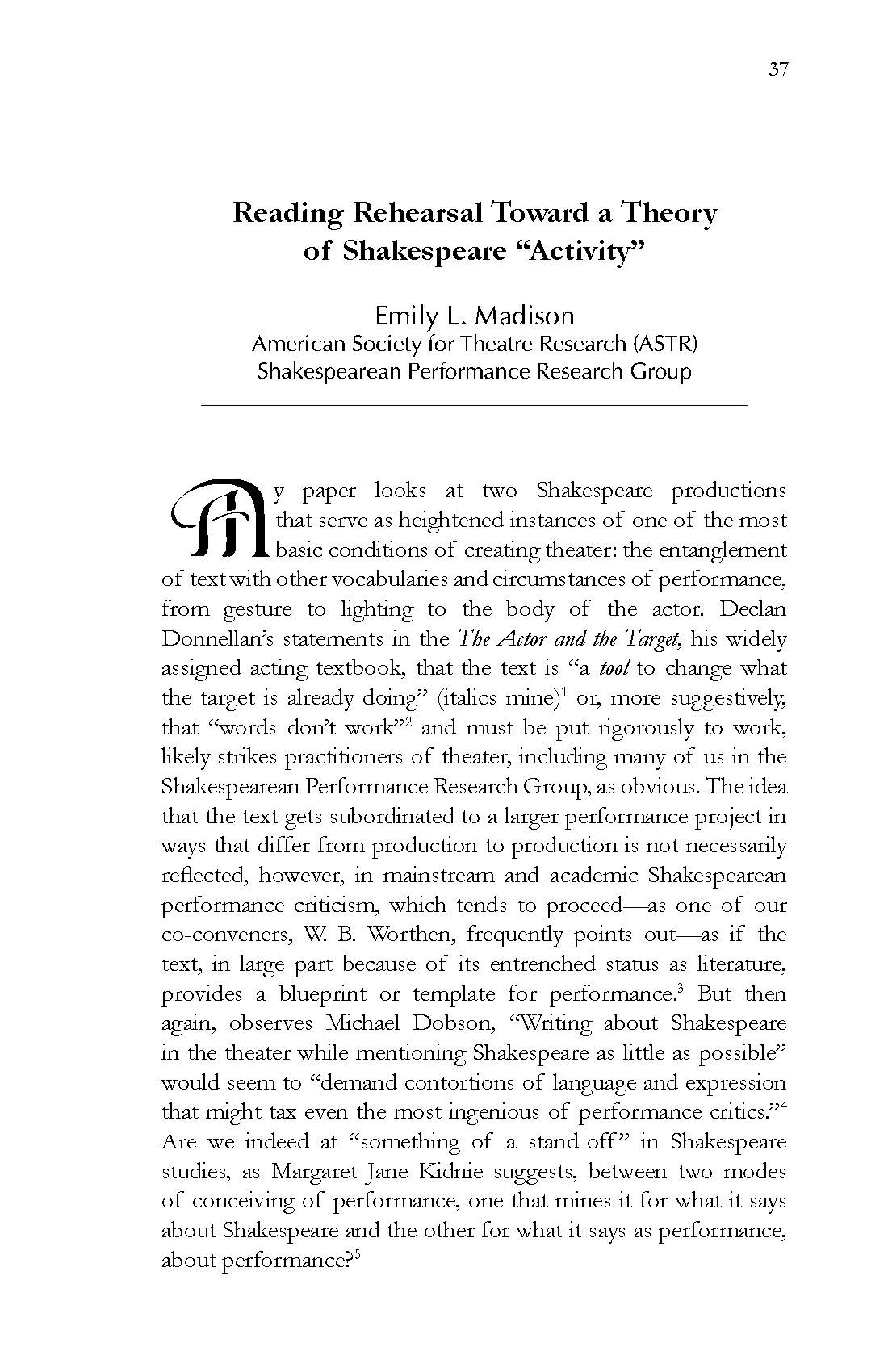Reading Rehearsal Toward a Theory of Shakespeare “Activity”
Main Article Content
Abstract
My paper looks at two Shakespeare productions that serve as heightened instances of one of the most basic conditions of creating theater: the entanglement of text with other vocabularies and circumstances of performance, from gesture to lighting to the body of the actor. Declan Donnellan’s statements in the The Actor and the Target, his widely assigned acting textbook, that the text is “a tool to change what the target is already doing” (italics mine)1 or, more suggestively, that “words don’t work”2 and must be put rigorously to work, likely strikes practitioners of theater, including many of us in the Shakespearean Performance Research Group, as obvious. The idea that the text gets subordinated to a larger performance project in ways that differ from production to production is not necessarily reflected, however, in mainstream and academic Shakespearean performance criticism, which tends to proceed—as one of our co-conveners, W. B. Worthen, frequently points out—as if the text, in large part because of its entrenched status as literature, provides a blueprint or template for performance.3 But then again, observes Michael Dobson, “Writing about Shakespeare in the theater while mentioning Shakespeare as little as possible” would seem to “demand contortions of language and expression that might tax even the most ingenious of performance critics.”4 Are we indeed at “something of a stand-off ” in Shakespeare studies, as Margaret Jane Kidnie suggests, between two modes of conceiving of performance, one that mines it for what it says about Shakespeare and the other for what it says as performance, about performance?5
